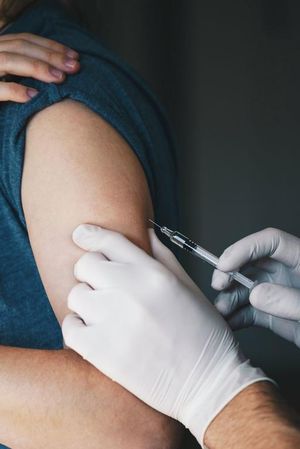A new bioinspired gel polymer electrolyte (WSGPE) has been developed for lithium metal batteries, enabling stable and efficient performance across extreme temperatures, ranging from -30 to 80 °C. Researchers believe this innovation could significantly advance battery technology, improving safety and reliability for energy storage devices.
The innovative WSGPE exhibits remarkable properties such as high ionic conductivity and fire resistance, pivotal for application in high-voltage batteries. With excellent electrochemical performance, it promises to revolutionize the operation of lithium metal batteries which are currently constrained by temperature limitations.
Made using branched polymer structures, the WSGPE utilizes double dipole coupling to regulate the lithium ion coordination environment, creating what is termed as weak solvation structures. This unique arrangement leads to both enhanced ion transport and minimized reactions at the electrode interfaces, addressing safety issues typically associated with lithium-ion technology.
Specifically, the electrolyte achieves an ionic conductivity of 1.03 × 10–4 S cm−1 even at -40 °C, indicating its ability to perform effectively under low-temperature conditions. Initial testing of batteries incorporating the WSGPE has shown promising results, with specific discharge capacities recorded at 121.4 mAh g–1 at -30 °C and 172.2 mAh g–1 at 80 °C, showcasing its versatility.
The all-fluorinated nature of the WSGPE boosts its electrochemical window to 5.05 V, allowing for higher energy output without compromising safety. Through comprehensive cycling tests, Li|WSGPE | NCM811 batteries demonstrated significant capacity retention after extensive cycling, indicating not just efficiency but long-term stability as well.
One notable experiment involved pouch cells, which reported specific energy values up to 490.8 Wh kg−1, affirming the practical applications of this newly developed electrolyte. Importantly, these structures displayed stable performance even after 100 cycles, emphasizing their reliability for sustained use.
Safety analyses featured stable interfacial impedances, confirming the WSGPE’s capacity to inhibit lithium dendrite growth—one of the significant risks associated with lithium metal batteries. This innovative material also prevented chemical decomposition and leakage, problems endemic to traditional liquid electrolytes.
Further studies highlighted the WSGPE’s rapid charge transfer capabilities, with accelerated functionality at both high and low temperatures. The electrolyte demonstrates favorable conditions for the deployment of lithium batteries even under abusive environmental conditions.
Overall, the development of the WSGPE encapsulates significant advancements in battery technology, paving the way for safer, high-performance lithium metal batteries fit for the future of energy storage, potentially revolutionizing everything from consumer electronics to electric vehicles.



